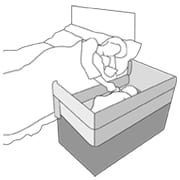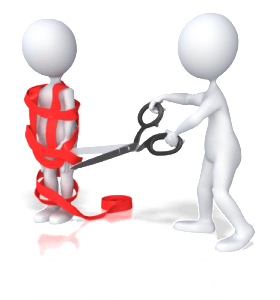CPSC Issues Final Rule for the Safety Standard of Bedside Sleepers
 The CPSC issued a Final Rule for the Safety Standard of Bedside Sleepers on January 15, 2014 with an effective date of July 15, 2014. The rule incorporates the voluntary standard developed by ASTM International (formerly the American Society for Testing and Materials), ASTM F2906-13, “Standard Consumer Safety Specification for Bedside Sleepers” (ASTM F2906-13), by reference, and requires bedside sleepers to be tested to 16 CFR part 1218, the Safety Standard for Bassinets and Cradles (bassinet standard). ASTM F2906-13 defines “bedside sleeper” as “a rigid frame assembly that may be combined with a fabric or mesh assembly, or both, used to function as sides, ends, or floor or a combination thereof, and that is intended to provide a sleeping environment for infants and is secured to an adult bed.” A “multi-mode product” is “a unit that is designed and intended to be used in more than one mode (for example, a play yard, bassinet, changing table, hand held carrier, or bedside sleeper).” A bedside sleeper is intended to be secured to an adult bed to permit newborns and infants to sleep close by an adult without being in the adult bed. Bedside sleepers currently on the market have a horizontal sleep surface that typically is 1 inch to 4 inches below the level of the adult bed’s mattress. The side of the bedside sleeper that is adjacent to the adult bed can usually be adjusted to a lower position, a feature that differentiates bedside sleepers from bassinets, where all four sides of a bassinet are the same height. Current bedside sleepers range in size from about 35″ x 20″ to 40″ x 30.″ Bedside sleepers may have rigid sides, but they are most commonly constructed with a tube frame covered by mesh or fabric. Bedside sleepers are intended for use with children up to the developmental stage where they can push up on hands and knees (about 5 months). This is the same developmental range for the intended users of bassinets. Several manufacturers produce multiuse (or multimode) bedside sleeper products that can convert into bassinets and/or play yards. Most bedside sleeper products can be converted into a bassinet by raising the lowered side to create four equal-height sides, and a few also convert into both a bassinet and play yard. Some play yards include bedside sleeper accessories, which when attached, convert the play yard into a bedside sleeper; and some bassinets convert into bedside sleepers. All of the tube-framed products that CPSC staff has evaluated may be collapsed for storage and transport. A bedside sleeper that can be used in additional modes would need to meet each applicable standard. For example, a bedside sleeper that converts to a bassinet must meet the bedside sleeper standard and the bassinet standard. The CPSC has proposed to adopt by reference, ASTM International’s voluntary standard, ASTM F2906-12, Standard Consumer Safety Specification for Bedside Sleepers, with a few additions to strengthen the standard.
The CPSC issued a Final Rule for the Safety Standard of Bedside Sleepers on January 15, 2014 with an effective date of July 15, 2014. The rule incorporates the voluntary standard developed by ASTM International (formerly the American Society for Testing and Materials), ASTM F2906-13, “Standard Consumer Safety Specification for Bedside Sleepers” (ASTM F2906-13), by reference, and requires bedside sleepers to be tested to 16 CFR part 1218, the Safety Standard for Bassinets and Cradles (bassinet standard). ASTM F2906-13 defines “bedside sleeper” as “a rigid frame assembly that may be combined with a fabric or mesh assembly, or both, used to function as sides, ends, or floor or a combination thereof, and that is intended to provide a sleeping environment for infants and is secured to an adult bed.” A “multi-mode product” is “a unit that is designed and intended to be used in more than one mode (for example, a play yard, bassinet, changing table, hand held carrier, or bedside sleeper).” A bedside sleeper is intended to be secured to an adult bed to permit newborns and infants to sleep close by an adult without being in the adult bed. Bedside sleepers currently on the market have a horizontal sleep surface that typically is 1 inch to 4 inches below the level of the adult bed’s mattress. The side of the bedside sleeper that is adjacent to the adult bed can usually be adjusted to a lower position, a feature that differentiates bedside sleepers from bassinets, where all four sides of a bassinet are the same height. Current bedside sleepers range in size from about 35″ x 20″ to 40″ x 30.″ Bedside sleepers may have rigid sides, but they are most commonly constructed with a tube frame covered by mesh or fabric. Bedside sleepers are intended for use with children up to the developmental stage where they can push up on hands and knees (about 5 months). This is the same developmental range for the intended users of bassinets. Several manufacturers produce multiuse (or multimode) bedside sleeper products that can convert into bassinets and/or play yards. Most bedside sleeper products can be converted into a bassinet by raising the lowered side to create four equal-height sides, and a few also convert into both a bassinet and play yard. Some play yards include bedside sleeper accessories, which when attached, convert the play yard into a bedside sleeper; and some bassinets convert into bedside sleepers. All of the tube-framed products that CPSC staff has evaluated may be collapsed for storage and transport. A bedside sleeper that can be used in additional modes would need to meet each applicable standard. For example, a bedside sleeper that converts to a bassinet must meet the bedside sleeper standard and the bassinet standard. The CPSC has proposed to adopt by reference, ASTM International’s voluntary standard, ASTM F2906-12, Standard Consumer Safety Specification for Bedside Sleepers, with a few additions to strengthen the standard.
- § 5.1Prior to or immediately after testing to this consumer safety specification, the bedside sleeper must be tested to 16 CFR part 1218. Multimode products must also be tested to each applicable standard. When testing to 16 CFR part 1218, the unit shall be freestanding, and not be secured to the test platform, as dictated elsewhere in this standard.
- § 5.1.1The bassinet minimum side height shall be as required in 16 CFR part 1218, with the exception of a lowered side rail as permitted in § 5.4.Show citation box
- § 7.1All bedside sleeper products shall comply with the marking and labeling requirements of 16 CFR part 1218.
- § 8.1All bedside sleeper products shall comply with the instructional literature requirements of 16 CFR part 1218

